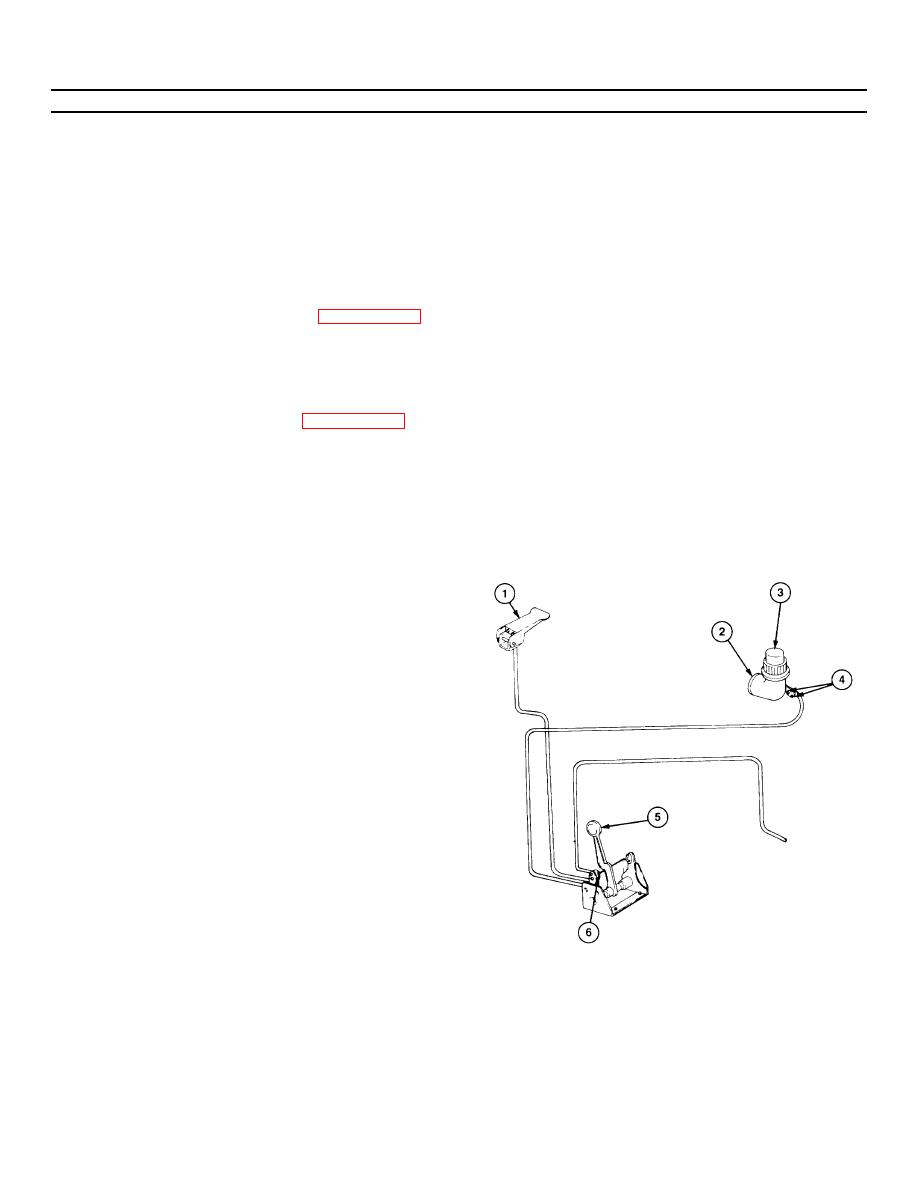
TM 9-2330-398-10
2-16.
GENERAL FUEL-HANDLING INSTRUCTIONS (continued).
WARNING
The operator must be alert for leaking and malfunctioning equipment. Stop all servicing
operations immediately at the first sign of leaks or malfunctions. Corrective action must be
performed by qualified technicians before resuming any operations. Failure to observe these
precautions may result in injury to personnel.
d.
SPILLS AND LEAKS. All spills must be cleaned up immediately. Suitable containers must be placed under hose
connections to collect leakage or spills.
e.
f.
BULK FUEL SERVICING HOSES. Whenever bulk fuel hose is required, remove the necessary lengths from
hose troughs and couple together as required.
g.
FUEL-DISPENSING NOZZLES. Make sure hoses are installed with correct fuel dispensing nozzles for the
operation intended. Refer to paragraph 3-11 to install fuel-dispensing nozzles.
h.
EMERGENCY VALVE OPERATION. The emergency valve (2) controls the tank outlet. The emergency valve (2)
and its vapor vent (3) are mechanically operated by the emergency valve A control handle (5) in the piping control
assembly. Engaging the emergency valve A control handle (5) opens the emergency valve (2) to permit fuel flow
to/from tank sump. At the same time, vapor vent (3) at top of tank opens to relieve pressure/ vacuum during
loading or unloading.
1.
Emergency valve (2) must be open for all
loading/unloading operations except top loading.
2.
In an emergency, close emergency valve (2) by
disengaging emergency valve A control handle
(5) (road side of semitrailer), or by pulling
emergency valve shut-off (1) (curb side).
3.
In the event of fire or explosion, either the fusible
nut (6) on emergency valve A control handle (5)
or the fuse plates (4) at emergency valve (2) will
melt, releasing emergency valve (2) and
automatically stopping fuel flow.
2-39

